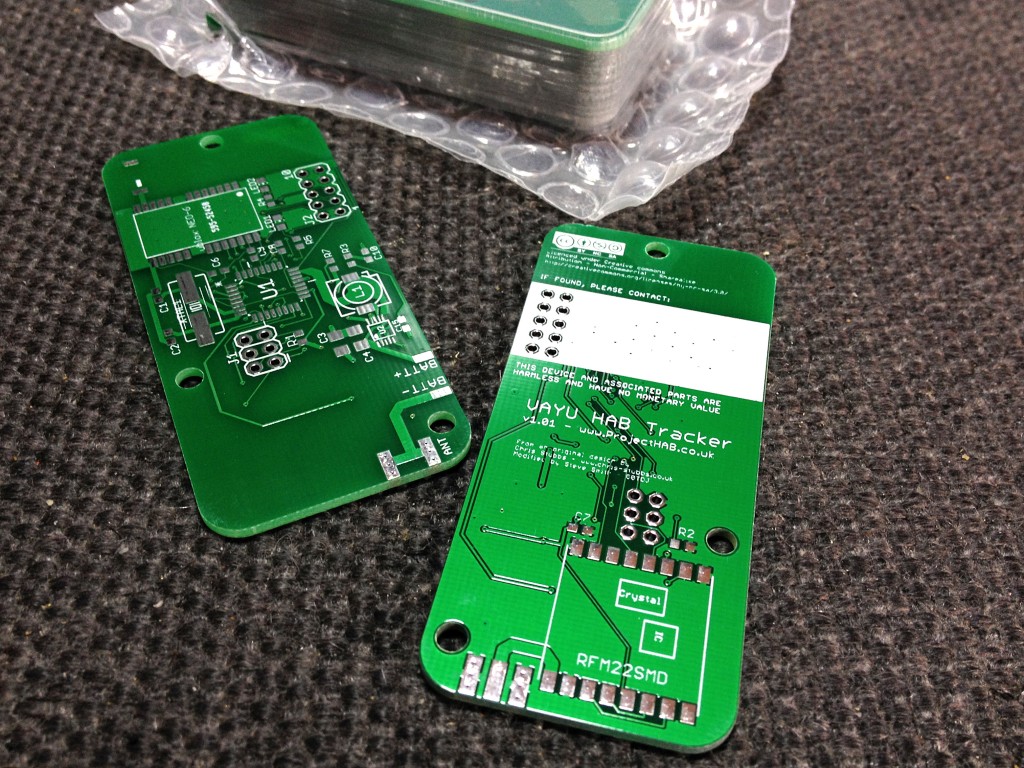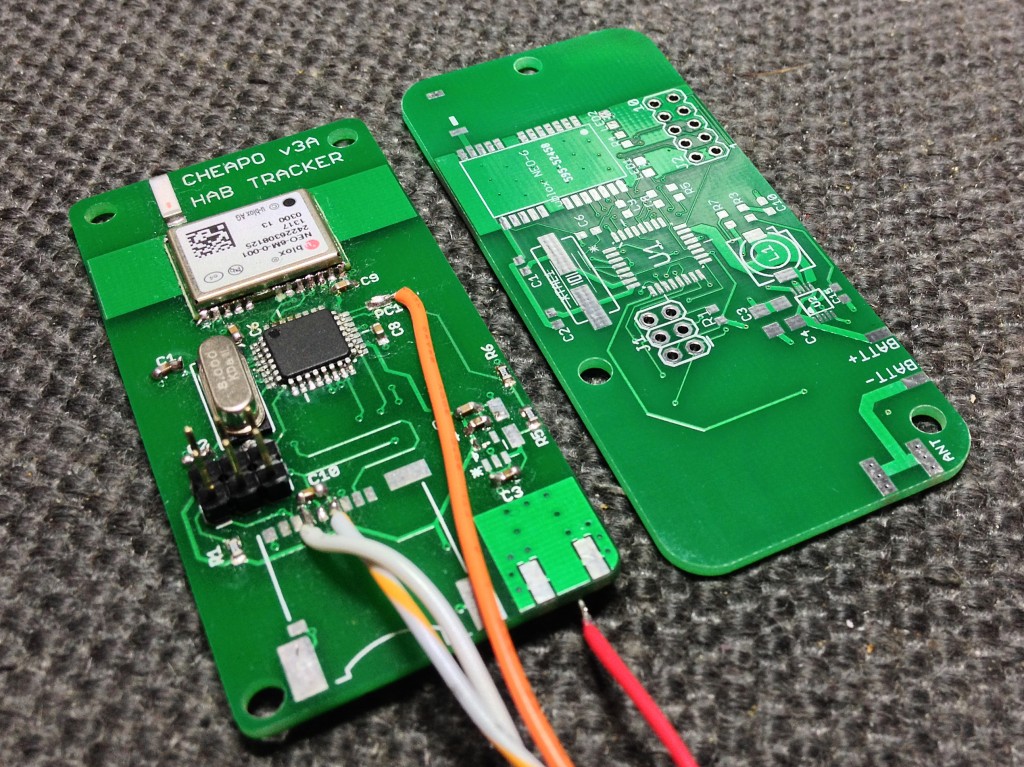When field testing my re-design of CHEAPO into VAYU I noticed that the transmit frequency is easily affected by ambient temperature. Although this tends not to be too much of a problem once the payload is several kilometers up and stabalises, I wondered if I could improve the performance.
I’ve followed quite a few launches and the more stable tracker circuits seem to use the Radiometrix NTX-2 modules. After downloading the datasheet and skim reading it, I thought I’d have a go at designing a tracker PCB replacing the RFM22b Tx module with an NTX-2. Knowing I didn’t have a suitable component library for Eagle, I had a look around and found that Anthony Stirk had included it in his AVA library. Be sure to click on RAW and ‘Save As’ the page as Ava.lbr to use.
Having had the experience of designing the boost regulator circuit for the VAYU prototype, I had a good idea of how to lay out a new version. I started by changing the circuit by substituting the RF modules. I then started a new PCB layout and roughly placed the components. I found that the most efficient way to lay out the different sections of the circuit was to start with the boost regulator and build around it. I tried several layouts before I was satisfied. I then made up the coil traces from polygons as per the previous design and routed important tracks, for the crystal for instance, manually. Once I was satisfied that I’d done my best I set Eagle to auto-route the rest. It wasn’t too successful and left a lot of air wires (yellow lines indicating a connection is required). Track by track, I manually routed the remaining connections through two layers, frequently checking the design rules to make sure I was within tolerances. Again, I used the Hackvana DRU file since, if I get the board fabricated, I would use their services.
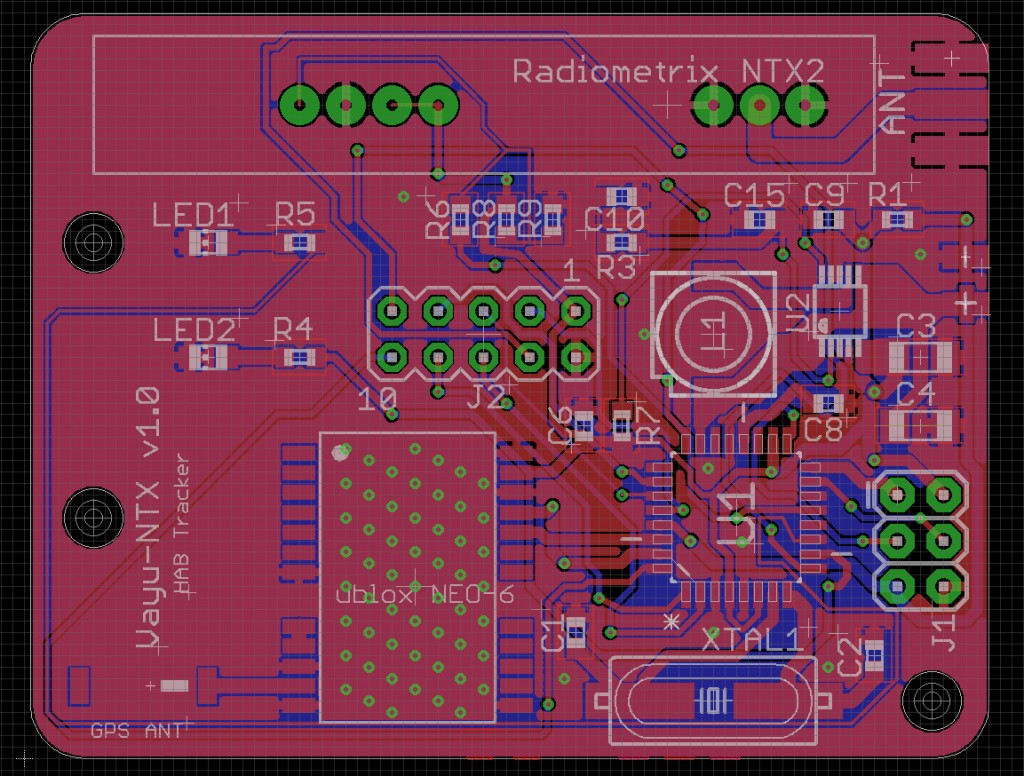
Vayu-NTX v1.01 tracker pcb
For convenience I have rotated the screen capture 90 degrees anti-clockwise. As you can see from the layout, I have retained the breakout header as well as the programming header. Also I have included two holes at the top of the pcb (left) for suspending the board as a payload.
I am unsure whether or not I will have these boards fabricated as-is because the boost regulator circuit is untested. But if the VAYU board works then I will have a small run of these VAYU-NTX boards fabricated by Hackvana at some stage. Although this took a good couple of hours to complete, it was great fun and rewarding to see a final design on the screen. The final steps, if I have the boards fabricated, will be to make sure the text is printable, add the creative commons licence logo and tidy a few tracks.
Both the VAYU and VAYU-NTX designs will be available from this site once testing has been completed. This will include PDF circuit diagram and track patterns, Eagle files and Gerber files. These will be licensed under Creative Commons Non-Commercial, Attribution, Share-alike.
[UPDATE]
To illustrate the constant tweaking and updating designs, I’ll post the image of how the board looks now. After a chat with my good friend Chris, at my request, he pointed out a few things I could improve on.
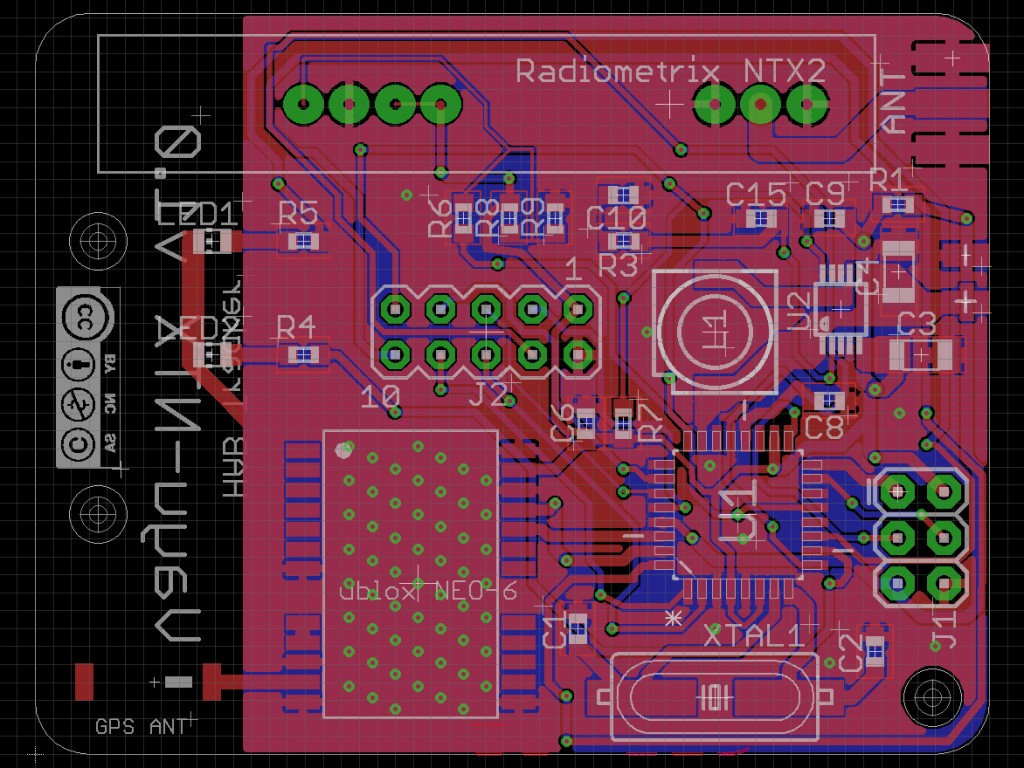
Vayu-NTX v1.02 updated tracker pcb
If you compare the two images, you can see I have moved the groundplane (GND) out of the way of the GPS antenna. I re-routed the two tracks that encircled the GPS antenna anther way. This was a lot of work but worth the effort. I also moved C4 since it is a de-coupling capacitor. The final two changes were to add a polygon to connect the LEDs to the now missing ground and to flip the text on to the back of the board to give it more space.
[UPDATE]
After showing the design to several of the great guys in the IRC channel #highaltitude, I was advised that I could lay the board out in a better way. The concern was that my layout wasn’t as efficient as it could be. I decided to try a new layout with the NTX module at the base allowing a short, straight connection for the RF Out pin. I was also advised that the uBlox MAX series had better performance than the NEO series, so I decided to substitute in a uBlox Max7 unit. It also occurred to me that I could make more of the AVR pins available. I started the board layout form scratch bearing in mind all the pointers I’d been given.
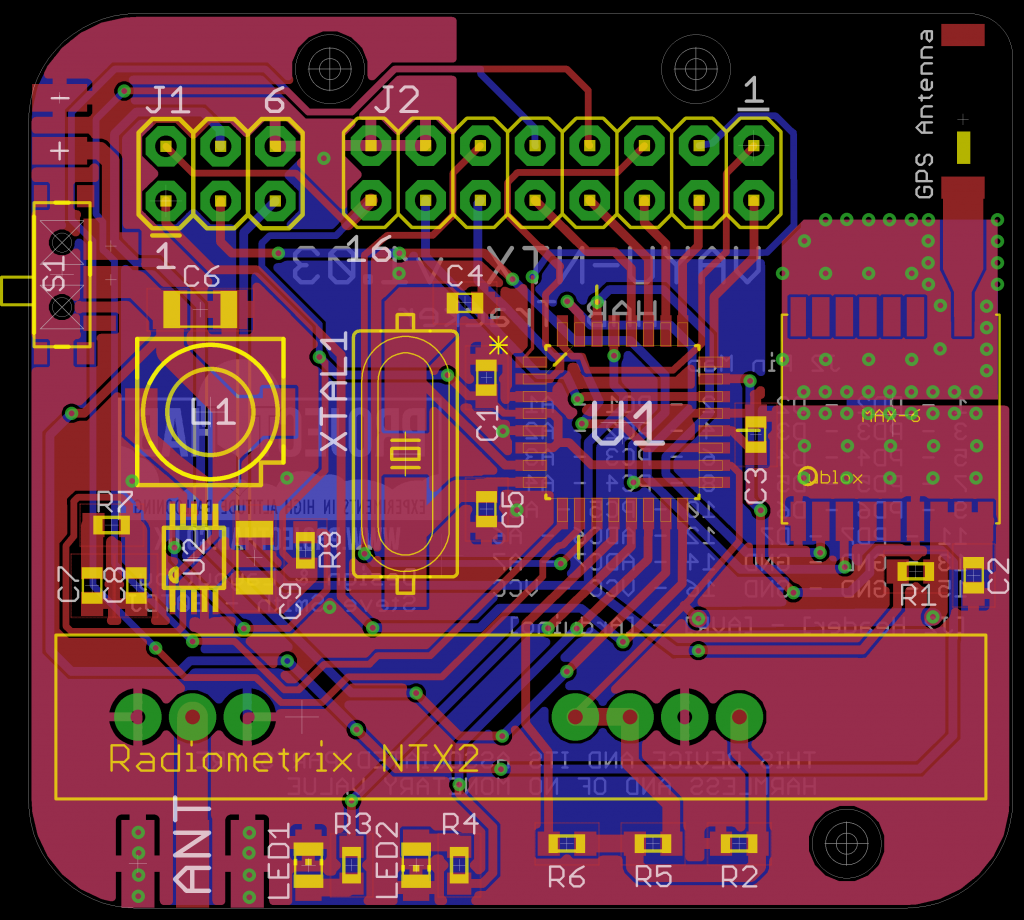
VAYU-NTX v1.03 previewed in Eagle
Another small modification I made was to change the component outlines to yellow to make them show up more than the original white. As you can see, the layout is completely different. Components have been placed to maximise their efficiency. Also, thanks to Ed (eroomde in #highaltitude) I split the ground plane under the GPS module to minimise noise from the AVR from affecting the acquisition of data. I am very happy with this mostly hand routed board. I currently await an order of 10 from Hackvana.
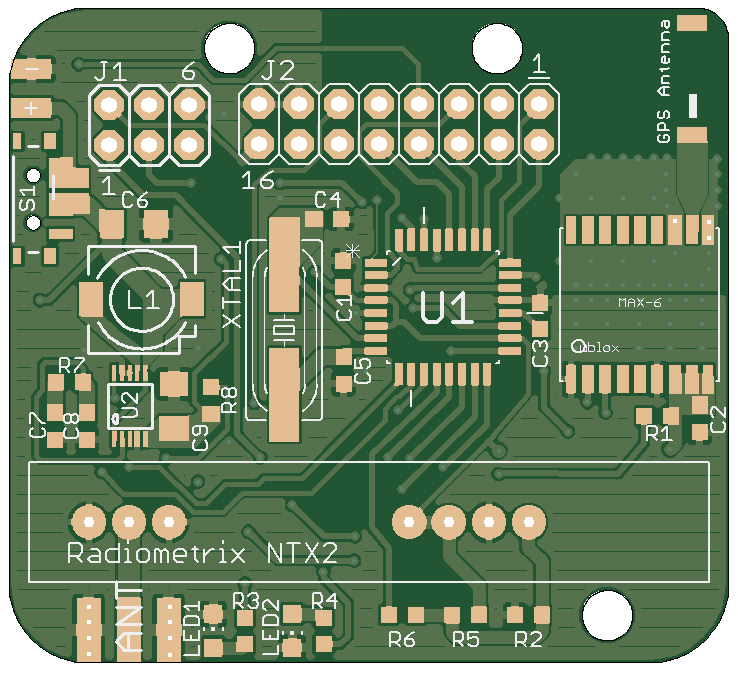
VAYU-NTX v1.03 previewed on www.gerblook.org



